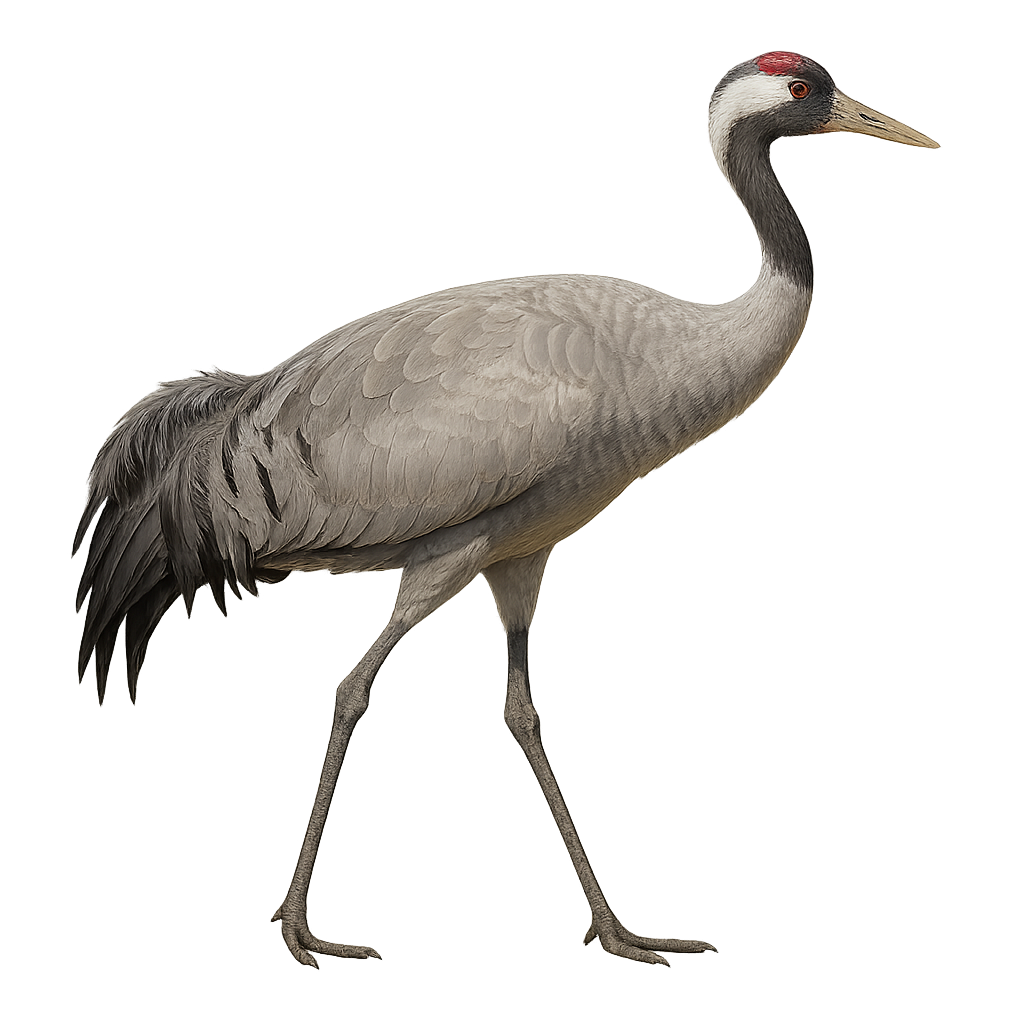Observe and photograph a species in its natural habitat
Learn where and when to observe a species in the wild, how to recognize it in the field, and what habitats it lives in. Get photography tips adapted to its behavior and capture stunning images without disturbing the animal. For full details, open the complete profile in the WildlifePhotographer app.
Common Crane
Scientific name: Grus grus

IUCN Status: Least Concern
Family: GRUIDAE
Group: Birds
Shyness: Shy
Safe distance: 30 m
Breeding season / Courtship: 01.03-31.03
Gestation: 29 à 30 jours
Births: 29.04-30.05
Habitat:
Wetlands and marshes
Description:
The Common Crane is a large migratory bird, easily recognizable by its slender silhouette, long neck, and extended wings. It stands about 1.2 meters tall, with a wingspan of 2 to 2.5 meters, and weighs between 4 and 6 kg. Its plumage is mainly gray, with white markings on the head, neck, and wings. It has a red head and a small tuft of feathers on top, giving it a distinctive appearance. The Common Crane primarily inhabits wetlands, marshes, and lakes across Europe and Asia, with large populations in Scandinavia, Germany, Poland, and the Mediterranean Basin. It is a migratory bird that travels to southern Europe and Africa for the winter. It feeds mainly on plants, roots, seeds, and occasionally insects. The Common Crane is also known for its impressive group migrations, with thousands of individuals flying in a "V" formation. While the species is not endangered, it is vulnerable to the loss of its natural habitat and disruption of its breeding sites.
Recommended lens:
>=300 mm
Photography tips:
Use a telephoto lens to photograph from a distance, respecting the species' skittish nature.
Photograph early in the morning or late in the afternoon when soft light enhances its elegant plumage.
Look for it in wetlands, fields, and meadows, particularly around Lake Der in Champagne-Ardenne, a prime location for crane observation during migration.
Be patient and discreet to avoid disturbing its natural behavior. Avoid sudden movements and keep quiet.
IUCN status: Least Concern. Respect its environment and minimize disturbance, especially during migration and breeding.
Ready to take action?
Choose your platform and start your free trial today



